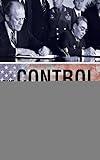The Control Agenda : A History of the Strategic Arms Limitation Talks / Matthew J. Ambrose.
Material type: TextPublisher: Ithaca, NY : Cornell University Press, [2018]Copyright date: ©2018Description: 1 online resource (282 p.)Content type:
TextPublisher: Ithaca, NY : Cornell University Press, [2018]Copyright date: ©2018Description: 1 online resource (282 p.)Content type: - 9781501709371
- Nuclear arms control -- Soviet Union -- History
- Nuclear arms control -- United States -- History
- International Studies
- Political Science & Political History
- U.S. History
- POLITICAL SCIENCE / International Relations / Arms Control
- nuclear, Cold War, Strategic Arms Limitation Talks, SALT, INF, arms control
- 327.1/747 23
- JZ5665
- online - DeGruyter
| Item type | Current library | Call number | URL | Status | Notes | Barcode | |
|---|---|---|---|---|---|---|---|
 eBook
eBook
|
Biblioteca "Angelicum" Pont. Univ. S.Tommaso d'Aquino Nuvola online | online - DeGruyter (Browse shelf(Opens below)) | Online access | Not for loan (Accesso limitato) | Accesso per gli utenti autorizzati / Access for authorized users | (dgr)9781501709371 |
Frontmatter -- Contents -- Acknowledgments -- INTRODUCTION. THE PROMISE OF CONTROL -- 1. ARMS CONTROL: CONTEXT AND PRECEDENTS -- 2. NEGOTIATION: A NEW DIMENSION IN STRATEGIC COMPETITION -- 3. AFTERMATH AND ADAPTATION: THE ORIGINS OF SALT II -- 4. “IN GOOD FAITH”: CARTER’S GAMBIT -- 5. “THINKING OUT LOUD”: THE STRUGGLE WITH SPRAWL -- 6. “SUMMARY—BLEAK”: THE UNRAVELING OF DETENTE -- 7. INF: THE LAST GASP OF SALT -- CONCLUSION. THE CONSEQUENCES OF CONTROL -- NOTES -- BIBLIOGRAPHY -- INDEX
restricted access online access with authorization star
http://purl.org/coar/access_right/c_16ec
The Control Agenda is a sweeping account of the history of the Strategic Arms Limitation Talks (SALT), their rise in the Nixon and Ford administrations, their downfall under President Carter, and their powerful legacies in the Reagan years and beyond.Matthew Ambrose pays close attention to the interplay of diplomacy, domestic politics, and technology, and finds that the SALT process was a key point of reference for arguments regarding all forms of Cold War decision making. Ambrose argues elite U.S. decision makers used SALT to better manage their restive domestic populations and to exert greater control over the shape, structure, and direction of their nuclear arsenals.Ambrose also asserts that prolonged engagement with arms control issues introduced dynamic effects into nuclear policy. Arms control considerations came to influence most areas of defense decision making, while the measure of stability SALT provided allowed the examination of new and potentially dangerous nuclear doctrines. The Control Agenda makes clear that verification and compliance concerns by the United States prompted continuous reassessments of Soviet capabilities and intentions; assessments that later undergirded key U.S. policy changes toward the Soviet Union. Through SALT’s many twists and turns, accusations and countercharges, secret backchannels and propaganda campaigns the specter of nuclear conflict loomed large.
Mode of access: Internet via World Wide Web.
In English.
Description based on online resource; title from PDF title page (publisher's Web site, viewed 26. Apr 2024)


